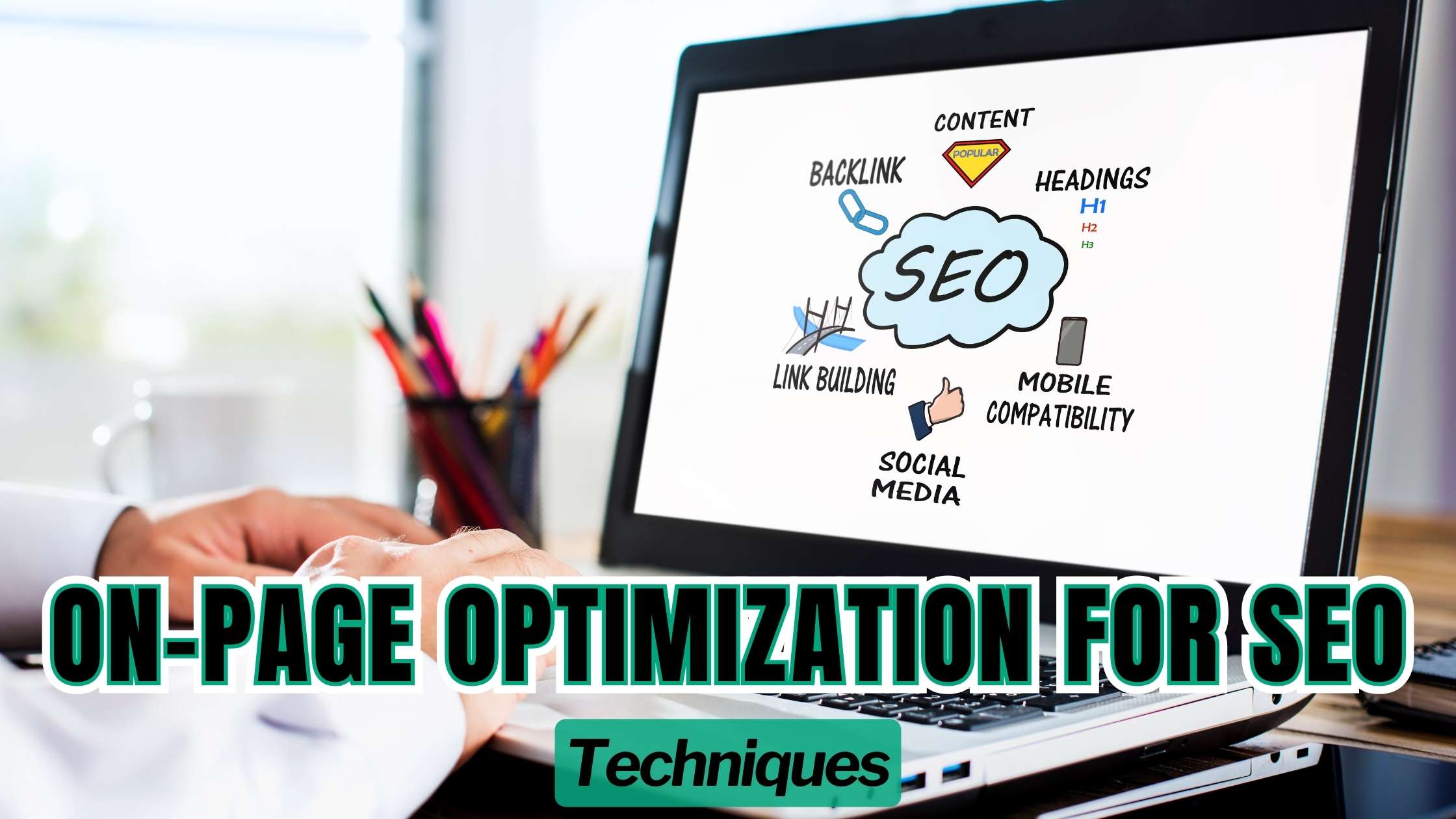On-page optimization for SEO: Techniques
- Conversational Marketing Software SEO Software Affiliate Marketing Software Marketing Tools


On-page Optimization for SEO: Techniques
Optimizing your website’s on-page elements is crucial for improving its visibility and ranking higher on search engine results pages (SERPs). In this comprehensive guide, we’ll explore various on-page optimization techniques to help you enhance your SEO efforts and attract more organic traffic to your website.
Understanding On-page Optimization
On-page optimization involves optimizing individual web pages to improve their search engine rankings and enhance user experience. By optimizing on-page elements such as content, HTML source code, and meta tags, you can make your website more relevant and accessible to search engines and users alike.
Key On-page Optimization Techniques
- Keyword Research and Targeting: Conduct thorough keyword research to identify relevant keywords and phrases for your content. Focus on long-tail keywords with high search volume and low competition. Integrate these keywords strategically into your page titles, headings, meta descriptions, and body content.
- Optimized Page Titles and Meta Descriptions: Craft compelling and descriptive page titles and meta descriptions that accurately reflect the content of your web pages. Include target keywords naturally while maintaining readability and relevance. Avoid keyword stuffing and ensure that each page has a unique title and description.
- High-Quality and Relevant Content: Create high-quality, informative, and engaging content that addresses the needs and interests of your target audience. Aim to provide valuable insights, solve problems, and answer questions relevant to your niche or industry. Regularly update and refresh your content to keep it relevant and up-to-date.
- Optimized URL Structure: Create descriptive and user-friendly URLs that reflect the content and structure of your web pages. Use hyphens to separate words and avoid using underscores or special characters. Keep URLs concise, relevant, and easy to read for both search engines and users.
- Heading Tags Optimization: Use proper heading tags (H1, H2, H3, etc.) to structure your content logically and emphasize important information. Include target keywords in your headings to signal relevance to search engines. Use one H1 tag per page and organize subsequent headings hierarchically.
- Image Optimization: Optimize images by using descriptive filenames, alt tags, and captions that include relevant keywords. Compress images to reduce file size and improve page loading speed. Ensure that images are properly formatted and optimized for mobile devices.
- Internal Linking: Incorporate internal links within your content to guide users to other relevant pages on your website. Internal linking helps distribute link equity and improve crawlability and indexing by search engines. Use descriptive anchor text that reflects the topic or keyword of the linked page.
- Mobile Optimization: Ensure that your website is mobile-friendly and responsive across various devices and screen sizes. Google prioritizes mobile-friendly websites in its search results, so optimizing for mobile is essential for SEO success. Test your website’s mobile compatibility using Google’s Mobile-Friendly Test tool.
- Page Loading Speed Optimization: Improve page loading speed by optimizing server response times, leveraging browser caching, and minimizing render-blocking resources. Use tools like Google PageSpeed Insights or GTmetrix to identify and fix performance issues that impact user experience and SEO.
- Schema Markup Implementation: Implement schema markup to provide search engines with structured data about your content. Schema markup enhances search results with rich snippets, such as star ratings, reviews, and product information, making them more informative and visually appealing.
Relevant SaaS Products for On-page Optimization
- SEMrush: SEMrush offers a comprehensive suite of SEO tools, including keyword research, on-page optimization, and site audit features, to help you improve your website’s search engine visibility and performance.
- Moz: Moz provides powerful SEO tools and resources, including on-page optimization recommendations, site audits, and link analysis, to help you optimize your website and achieve better search rankings.
- Ahrefs: Ahrefs offers advanced SEO tools for keyword research, competitive analysis, and on-page optimization, helping you identify and prioritize optimization opportunities to improve your website’s visibility and traffic.
- Yoast SEO: Yoast SEO is a popular WordPress plugin that offers on-page optimization features, including content analysis, XML sitemap generation, and meta tag optimization, to help you optimize your WordPress website for search engines.
- Screaming Frog: Screaming Frog is a website crawler tool that enables in-depth analysis of on-page SEO elements, such as URL structure, meta tags, and internal linking, helping you identify and fix optimization issues to improve your website’s performance.
Conclusion
Effective on-page optimization is essential for improving your website’s search engine visibility, attracting organic traffic, and achieving higher rankings on SERPs. By implementing the on-page optimization techniques outlined in this guide and utilizing relevant SaaS tools, you can enhance your SEO efforts and drive sustainable growth for your website.
Explore Subscribed.FYI to discover a wide range of SaaS tools designed to optimize your subscription stack and streamline your business operations. Unlock exclusive deals and access valuable insights to make informed decisions about SaaS tools that suit your specific requirements. Sign up today and revolutionize your SaaS experience!
Related Links:





